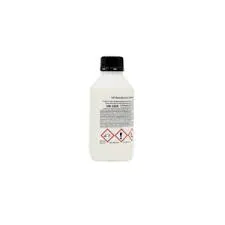Understanding the Properties and Applications of Hydrolyzed Polymaleic Anhydride in Various Industries
The Role of Hydrolyzed Polymaleic Anhydride in Water Treatment and Industrial Applications
Hydrolyzed polymaleic anhydride (HPMA) is a versatile polymer that has gained significant attention in various industrial applications, especially in water treatment processes. This polymer is derived from the anhydride of maleic acid, which upon hydrolysis, transforms into a functional polymeric form with unique properties. Due to its excellent chelation capabilities and ability to disperse particles, HPMA is widely utilized in industries ranging from oil production to cooling water systems.
Chemical Properties and Structure
The chemical structure of hydrolyzed polymaleic anhydride consists of repeating units of maleic anhydride and possesses a series of carboxylic acid functionalities due to the hydrolysis process. These carboxylic groups make HPMA an effective agent for binding metal ions and other contaminants present in water. The molecular weight of HPMA can vary depending on the synthesis method, but it is typically characterized as a low molecular weight polymer, which contributes to its high solubility in water and enhances its dispersant properties.
Applications in Water Treatment
One of the most significant applications of HPMA is in water treatment. It acts as a scale inhibitor, preventing the formation of calcium carbonate and other mineral deposits in cooling towers, boilers, and pipelines. These deposits can lead to decreased efficiency and damage to equipment. By adding HPMA to the water system, industries can ensure smoother operations, reduce maintenance costs, and extend the lifespan of industrial machinery.
Moreover, HPMA helps in dispersing suspended particles in water systems, which is crucial for maintaining clarity and quality in industrial processes. This property makes it particularly beneficial in the treatment of wastewater, where it can enhance flocculation processes. Flocculants work by aggregating particles into larger clusters, making it easier to remove them from the water. HPMA's ability to stabilize these flocs ensures efficient sedimentation and filtration in wastewater treatment plants.
hydrolyzed polymaleic anhydride

Role in Oil Recovery
In the oil industry, HPMA serves as a vital additive in enhanced oil recovery (EOR) techniques. The polymer's ability to reduce interfacial tension between oil and water enhances the flow of oil through porous rock formations. By injecting HPMA into the oil reservoir, operators can improve the overall extraction rates, which is an economically advantageous strategy.
Environmental Benefits
Hydrolyzed polymaleic anhydride is not only effective but also considered a more environmentally friendly alternative compared to traditional phosphonate-based scale inhibitors and dispersants. The biodegradability of HPMA minimizes its impact on the environment, making it a preferred choice for companies looking to comply with stricter environmental regulations.
Conclusion
The utilization of hydrolyzed polymaleic anhydride in various industrial applications underscores its importance in modern manufacturing and resource management. Its roles as a scale inhibitor, dispersant, and EOR additive highlight the polymer's versatility and effectiveness. As industries continue to seek sustainable and efficient solutions, HPMA represents a sophisticated option, balancing performance with environmental responsibility.
In summary, hydrolyzed polymaleic anhydride is an indispensable polymer in the arenas of water treatment and industrial processes, contributing to increased efficiency, reduced operational costs, and a smaller environmental footprint. The ongoing research and development surrounding HPMA will likely unlock further potential applications and innovations in the future, making it a polymer worth watching in the evolution of industrial chemistry. As industries embrace the importance of sustainability, the role of HPMA is expected to grow, solidifying its place as a key player in ecological and technological advancements.
-
Water Treatment with Flocculant Water TreatmentNewsJun.12,2025
-
Polymaleic AnhydrideNewsJun.12,2025
-
Polyaspartic AcidNewsJun.12,2025
-
Enhance Industrial Processes with IsothiazolinonesNewsJun.12,2025
-
Enhance Industrial Processes with PBTCA SolutionsNewsJun.12,2025
-
Dodecyldimethylbenzylammonium Chloride SolutionsNewsJun.12,2025





